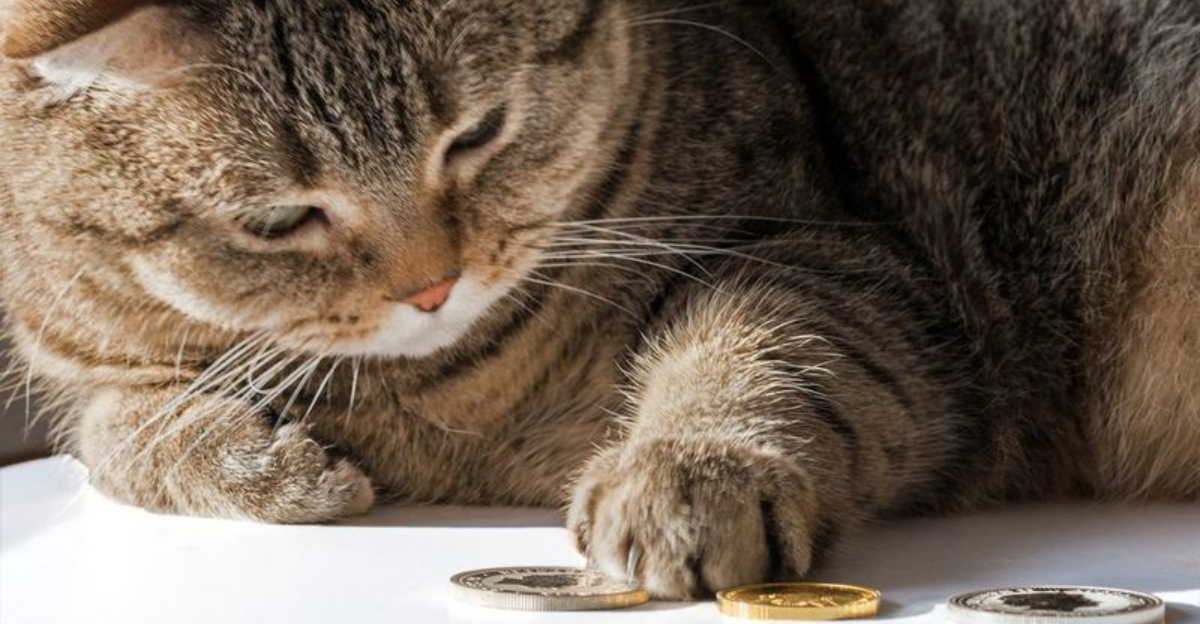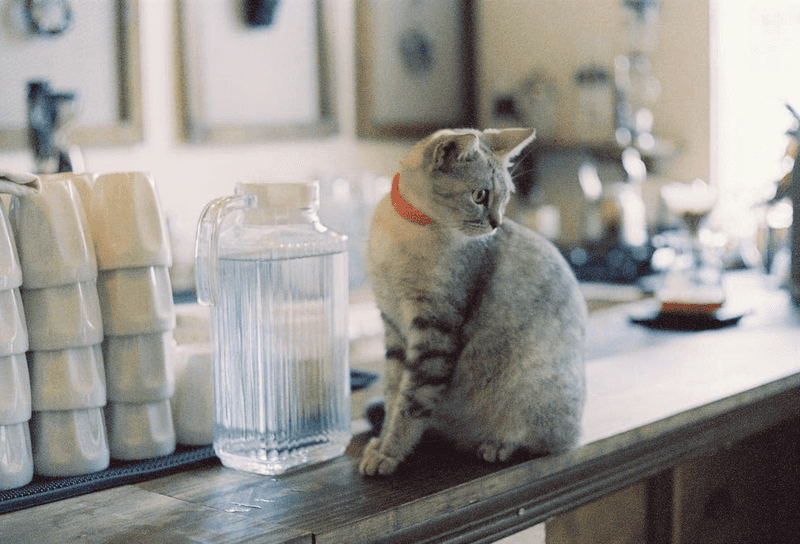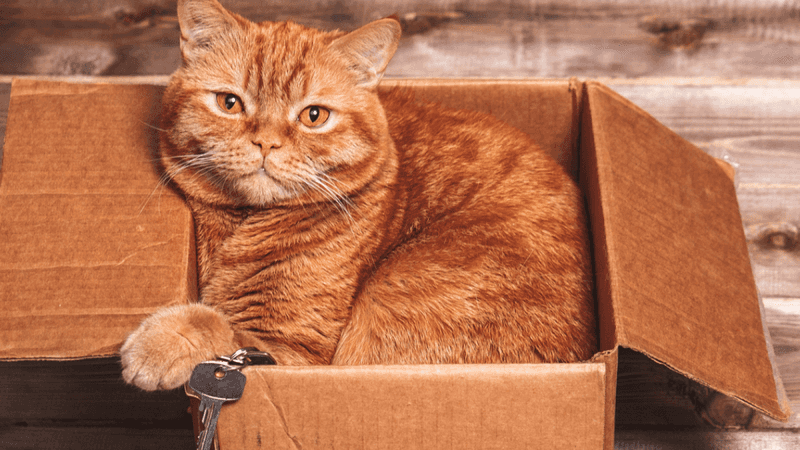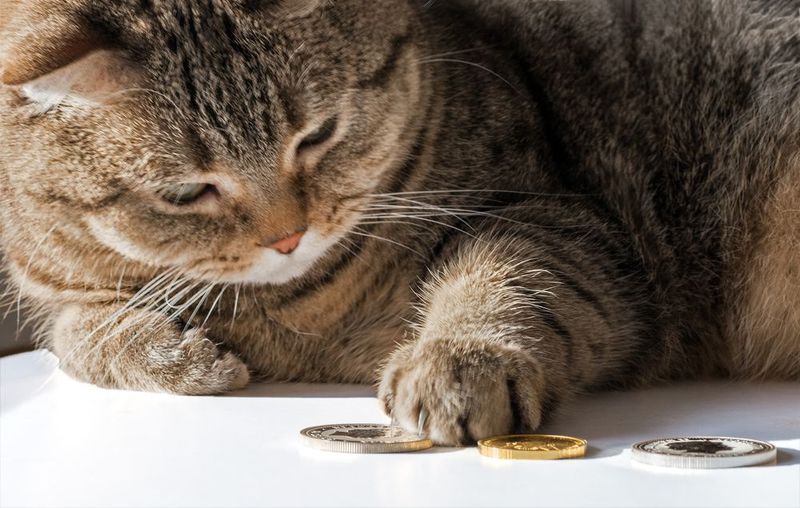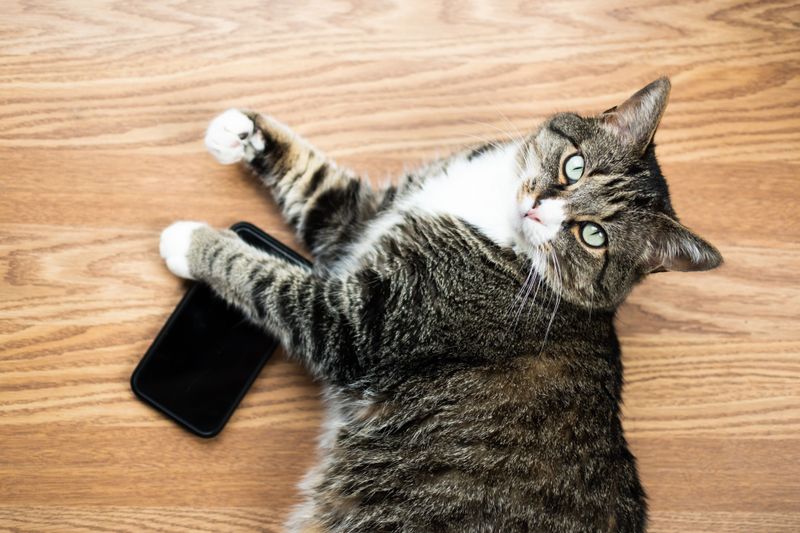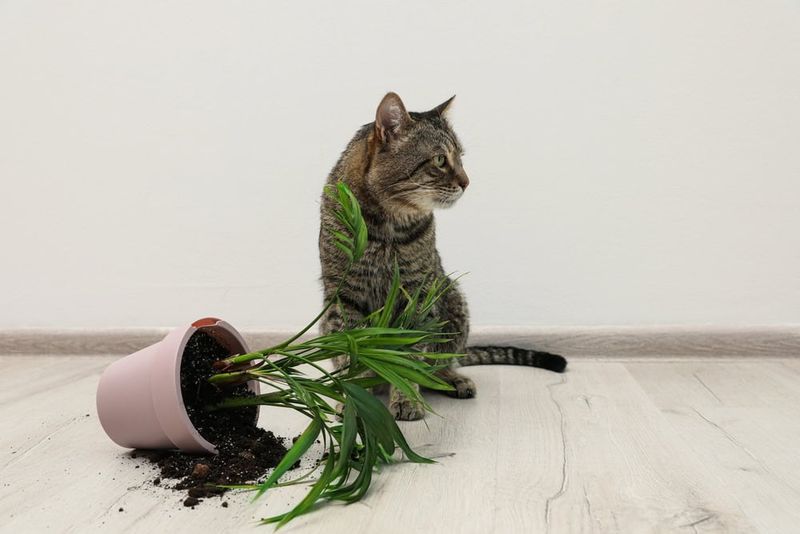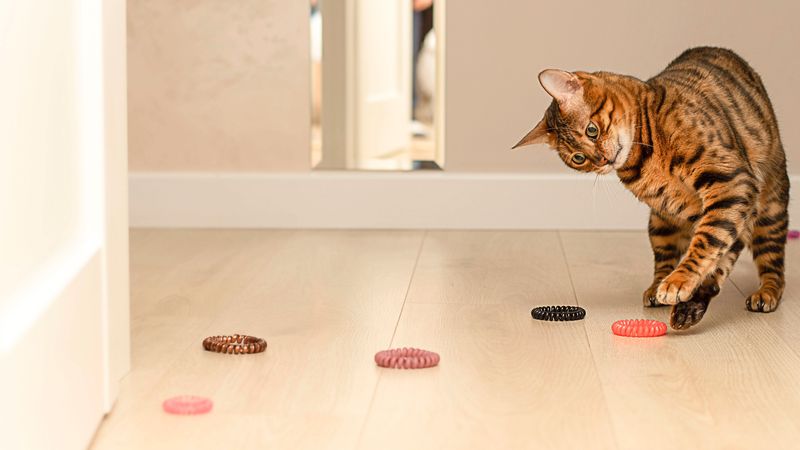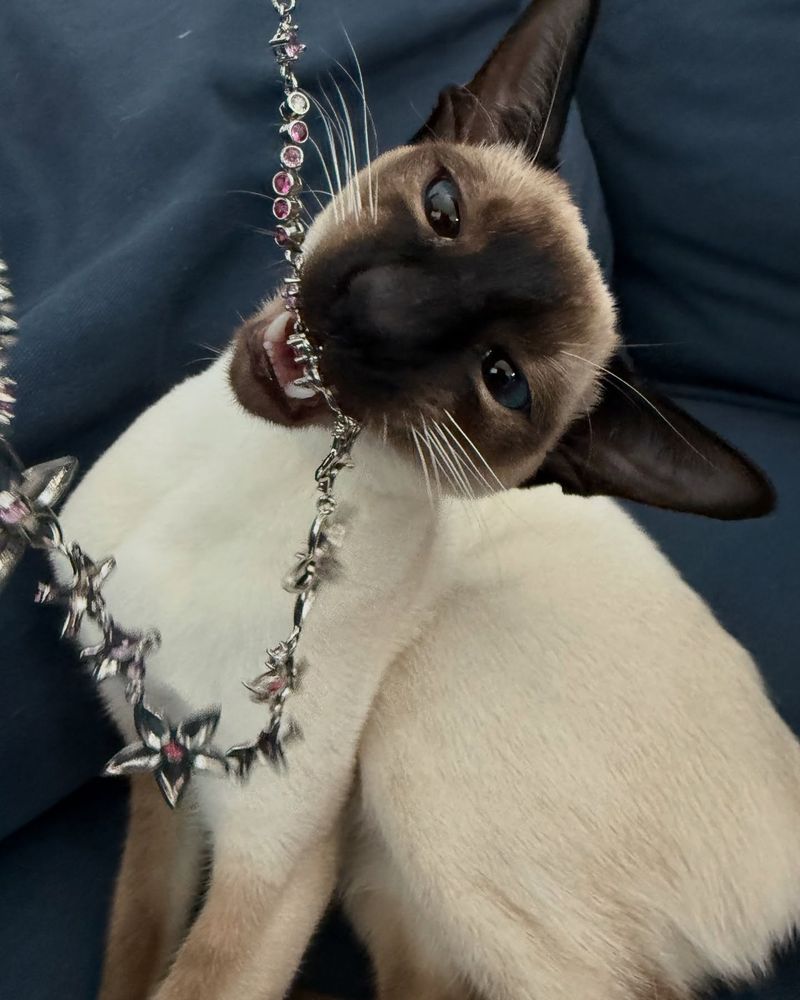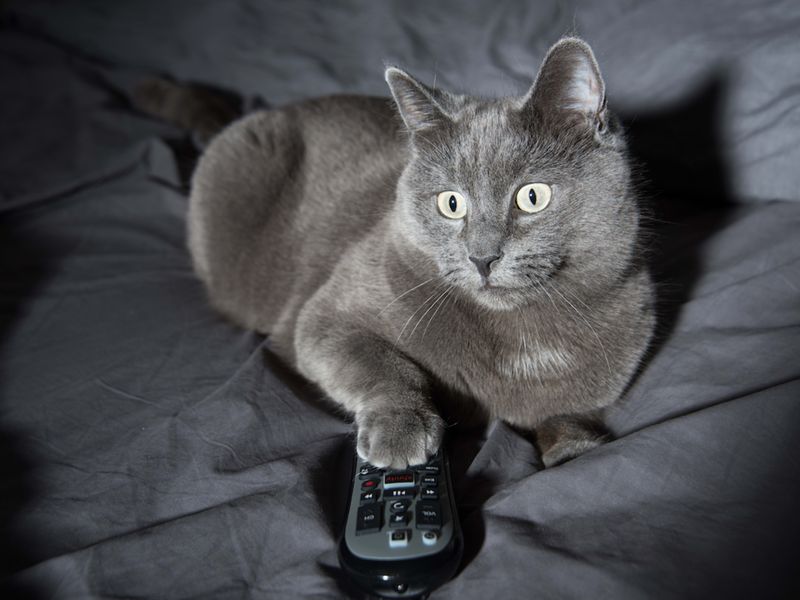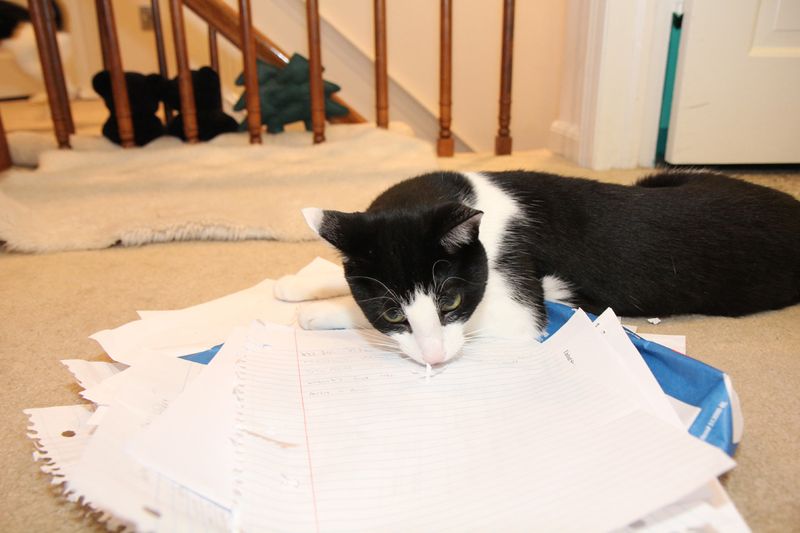📖 Table of Content:
Anyone who shares their home with a cat knows the scenario well: you’re sitting peacefully when a crash sounds in the next room. Rushing over, you discover your furry friend perched innocently beside an overturned glass or a scattered pile of coins. This peculiar behavior—pawing items off counters and tables—might seem like mischief, but to a cat, it’s often instinctive, purposeful, and sometimes just plain fun.
Cats are natural explorers with highly tuned senses and a hunter’s mindset, which means they interact with their environment in ways that don’t always align with human expectations. That pen you left on the desk? To your cat, it’s the perfect prey simulation. While it might be frustrating to clean up yet another toppled item, understanding why cats behave this way can help you manage it more effectively—and even see the humor and fascination behind their actions.
This article takes a closer look at ten common household items that cats can’t resist knocking over and explores the motivations behind each swat, nudge, and shove. From shimmering jewelry to the tactile temptation of a rubber band, every object tells a story about your cat’s curious nature and playful spirit.
1. Pens and Pencils
Perched on the edge of a desk or nightstand, pens and pencils present the ideal combination of accessibility and mobility for a curious cat. Their cylindrical design allows them to roll and fall with ease, giving your feline friend a rewarding cause-and-effect experience. Each paw swipe can send the object spinning or tumbling—an outcome cats often find highly entertaining. It’s not uncommon to find these items under sofas, beds, or mysteriously missing entirely. Some cats may even enjoy the sound of the pen hitting the floor, associating it with stimulation or attention. Because these tools are often associated with your work or focus, a cat might also knock them down just to reclaim your attention. The best way to keep your writing tools safe? Store them out of sight in a drawer or secure container.
2. Drinking Glasses
Sitting tall and delicate, drinking glasses seem to dare cats to test their balance. The satisfying crash when a glass hits the floor is its own form of dramatic theater for a feline observer. Cats might be drawn to the scent of what’s inside, whether it’s water, juice, or something more aromatic, adding an element of curiosity to the act. Transparent materials like glass can reflect light or distort images, intriguing cats who love visual stimulation. A glass near the edge of a table might simply be an obstacle in their territory—a trespasser that must be removed. Some cats develop a particular fascination with water and may knock over cups to access it or just for the splashing fun. To avoid broken glass and wasted beverages, consider using spill-proof tumblers or keeping drinks away from high-traffic feline areas.
3. Keys
Sitting in a jangly heap by the door or on a counter, keys can be both mysterious and musical to a cat’s sensitive ears. Their various shapes and textures invite exploratory paws and noses, and the sound they make when struck is often enough to pique interest. Keys also carry strong scents, from your skin’s oils to places you’ve been, which can further entice a curious feline. Swatting a key ring off a table creates a symphony of clinks and clatters that some cats find irresistible. Unlike softer items, keys don’t bounce unpredictably, which may make them more satisfying to bat and chase. A cat might also associate your keys with your departure, turning this into a behavioral expression of attachment or mild protest. For peace of mind—and to avoid a frantic morning search—try placing your keys in a closed dish or drawer.
4. Coins
Scattered coins glitter in the light and create delightful chaos when knocked loose. Cats often enjoy the metallic clatter that follows a paw-swipe, especially on hardwood or tile floors where the sound is amplified. Small and easy to grip or flip, coins mimic the size and movement of insect prey. The rolling, skidding path of a coin across the floor gives cats a mini hunting session without ever needing to leave the room. Some felines may even stash these treasures under furniture like they would a prized toy or catch. Because coins can pose a choking hazard, especially to younger cats, it’s important to keep them stored securely. Still, it’s easy to see how your spare change becomes prime feline entertainment in a flash.
5. Phones
Buzzing with activity and often warm to the touch, phones quickly become a focal point for feline curiosity. Your cat might associate the device with competition for your attention, especially if they notice you looking at it instead of them. Its smooth surface and rectangular shape offer little resistance to a well-aimed nudge, making it easy to knock off a nightstand or armrest. Vibration, light, and sound alerts further encourage interaction from a cat drawn to motion and noise. Some cats will even sit directly on phones, both to claim ownership and to investigate the strange object that so captivates their human. While the damage to a dropped phone can be serious, your cat likely sees it as another toy in their domain. Protective cases and out-of-reach shelves can help keep your device safe from feline interference.
6. Plants or Flower Vases
Natural and often fragrant, plants and flowers are like sensory wonderlands for cats. Leaves that sway gently in the breeze or petals that flutter under the AC vent can stimulate a cat’s hunting and foraging instincts. Knocking over a vase is an especially rewarding feat, offering water play, noise, and often a splashy mess. Some plants even emit smells that cats find intriguing—pleasant or repellent—and that curiosity can lead to a toppled pot. Others may see a plant as a snack or toy, nibbling leaves or digging in the soil. Beyond the mess, some plants can be toxic, making this one of the more serious knock-off habits to monitor. Placing greenery on secured surfaces or using hanging planters can reduce temptation and protect both your cat and your décor.
7. Hair Ties or Rubber Bands
Resting inconspicuously on a counter or bedside table, hair ties and rubber bands might seem harmless until your cat springs into action. Their stretchy, bouncy nature makes them ideal for chewing, flinging, and chasing across smooth surfaces. One swipe can send them sailing, and many cats will follow up with a frantic game of fetch or keep-away. These small items also carry your scent, offering comfort or a sense of connection to you. It’s not uncommon to find a stash of rubber bands hidden in a cat’s favorite napping spot. Despite their appeal, they can be dangerous if swallowed, so it’s wise to keep them tucked away when not in use. With their irresistible texture and unpredictable movement, it’s easy to see why cats treat these like prized possessions.
8. Jewelry
Shimmering in the light and often making a delicate tinkling sound, jewelry draws feline eyes and ears instantly. Rings, earrings, and bracelets are small enough to be batted around like prey, and their motion across a tabletop offers interactive amusement. Jewelry often carries your scent and may be associated with your routines, which can intensify your cat’s interest. The cold, smooth surface of metal or the texture of beaded designs adds another sensory layer. A cat may knock it off simply to see what happens—or to play with it privately on the floor later. Losing a favorite piece to this behavior can be both frustrating and costly, so storing jewelry in boxes or closed drawers is key. Despite your intentions, to a cat, that gold earring might just be the ultimate toy.
9. Remote Controls
Often left unattended on couches, armrests, or tables, remote controls are uninvited guests in your cat’s personal space. They’re bulky enough to require a bit of effort to move, which makes the act of shoving one off extra satisfying. Cats might knock them over simply because they’re in the way of a nap spot or perch. Buttons and textures offer tactile stimulation for curious paws, and the occasional beep or click can seem like a response to their actions. If the remote ever moves or lights up due to touch, that feedback might reinforce the behavior. Your cat may also associate the remote with activities that limit their interaction with you, like watching TV instead of playing. Keeping it in a drawer or using velcro to secure it might just save your entertainment setup from constant feline sabotage.
10. Notebooks or Paper
Appealing to a cat’s tactile and territorial instincts, notebooks and loose paper are often flattened or pushed aside with precision. The crinkling sound of paper under paws adds an element of play, while the texture may feel good to scratch or bite. A notebook you’re actively writing in may be seen as a rival for your attention, triggering the urge to disrupt it. Some cats simply enjoy sitting on paper as a way to claim it—or you—as their own. Moving the object off a table may be an effort to make space for lounging or an invitation for play. Loose papers fluttering in a breeze can also mimic prey behavior, drawing your cat in. To avoid paper-related chaos, try keeping workspaces tidy or offering your cat a decoy pile of safe scrap paper to sit on instead.
